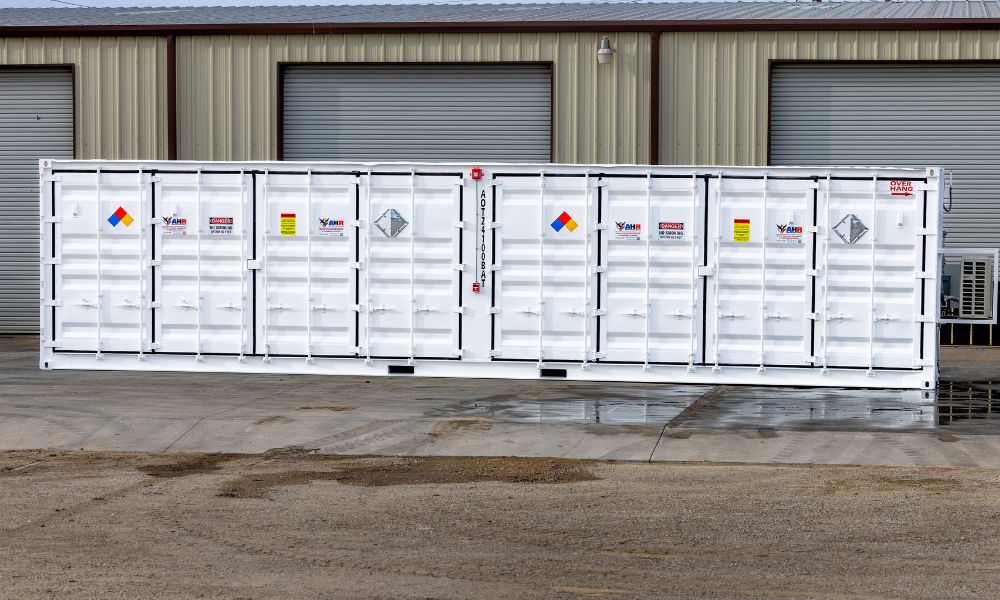
Storing hazardous materials (hazmat) involves navigating a maze of regulations and best practices to prevent accidents and protect public health. Errors such as improper segregation, inadequate labeling, poor ventilation, and applying the wrong regulations can have serious consequences, from legal penalties to life-threatening incidents. Explore common mistakes to avoid in hazmat storage and gain some insights for safe and compliant storage.
Improper Segregation
Improper segregation in hazmat storage involves storing incompatible chemicals or substances too close together or without adequate separation. This oversight can lead to dangerous chemical reactions, including fires, explosions, or the release of toxic gases, posing severe risks to health, safety, and the environment.
To avoid improper segregation, adhere to guidelines and regulations that specify how to store different types of materials relative to one another. This includes maintaining sufficient physical distance between incompatible substances, using appropriate barriers or containment methods, and clearly labeling storage areas to prevent mix-ups.
Inadequate Labeling
Inadequate labeling is another common mistake to avoid in hazmat storage. Sometimes, facilities do not adequately mark hazmat containers with information regarding their contents and associated hazards. This deficiency can lead to confusion, mishandling, and accidental exposure to hazardous chemicals, putting workers’ health and safety at risk and potentially leading to environmental contamination.
Follow the labeling guidelines outlined by regulatory bodies, such as OSHA in the United States, to rectify and prevent the consequences of inadequate labeling. Use durable labels that display essential information, including the chemical name, hazard symbols, and risk statements, on every container, regardless of size.
Poor Ventilation
Poor ventilation can lead to the accumulation of toxic fumes, gases, or vapors, creating an unsafe environment for workers and anyone else present. Without adequate airflow, these hazardous substances can reach dangerous concentrations, posing significant health risks through inhalation or even the potential for explosive atmospheres.
Hazmat storage lockers require ventilation systems capable of effectively removing hazardous emissions from storage areas. Mechanical ventilation systems should sufficiently handle the types and volumes of hazardous materials stored, ensuring continuous air exchange and preventing the buildup of dangerous concentrations of hazardous substances. Facilities can prevent or address ventilation failures through regular maintenance and inspections, as well as continuous monitoring of air quality.
Applying the Wrong Regulations
Applying the wrong regulations to hazardous materials storage stems from misunderstanding or misinterpreting the specific legal and safety requirements. This mistake can lead to non-compliance with relevant laws, resulting in fines, legal action, and potentially hazardous incidents that could have been avoided with proper adherence to the correct guidelines.
Regulatory standards vary depending on the nature, quantity, and storage environment of the hazardous material. For example, OSHA, the National Fire Protection Association (NFPA), and your local fire marshal create and enforce regulations for paint storage. If you plan to store more than 60 gallons of solvent-based paint indoors, you must use a fire-rated paint storage locker. Conduct thorough research and seek expert advice to understand the specific requirements governing the hazardous materials your facility handles.
Proper segregation, adequate labeling, sufficient ventilation, and following the correct regulations help facilities vastly reduce the risk of accidents and legal complications. For compliant storage and peace of mind, invest in hazmat lockers from American Hazmat Rentals. Our units make workflows more efficient and keep your worksite safe.